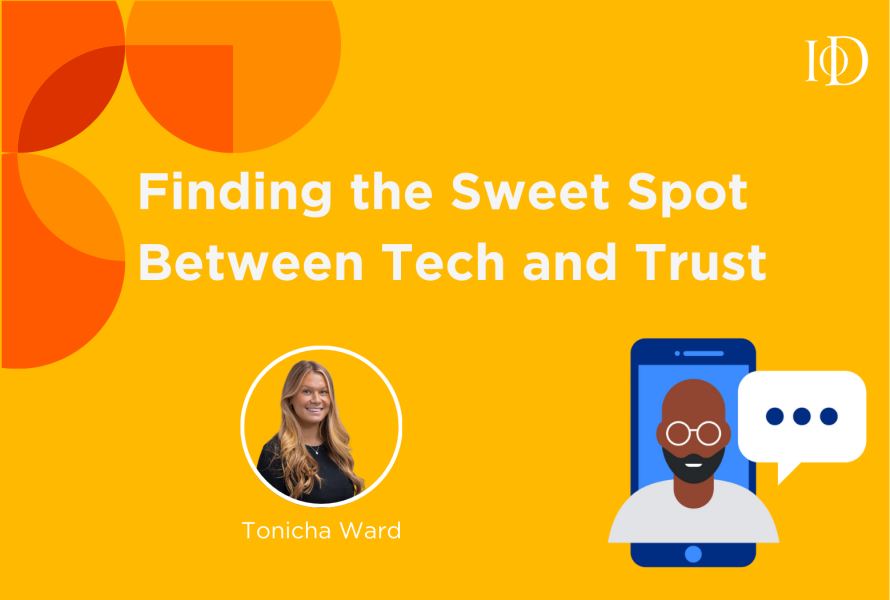
AI is transforming marketing as we know it. From crafting hyper-personalised recommendations to streamlining massive campaigns, it’s becoming an essential tool for brands to connect with their audiences.
But with all this power, there’s a real challenge: how do you keep things authentic and human?
Because while people love a personalised touch, they can spot something that feels overly robotic or artificial a mile away. The best marketing doesn’t just rely on clever tech; it combines the efficiency of automation with the magic of genuine human connection.
When AI Gets It Right: Personalisation That Feels Effortless
AI’s real strength is its ability to make people feel like they’re getting a completely tailored experience. Below are some examples of brands which have got the balance of personalisation and authenticity right.
1. Spotify Wrapped: A Personal Celebration
Every December, Spotify Wrapped takes over social media feeds as users excitedly share their year in music. Behind the scenes, Spotify uses clever AI to analyse listening habits – everything from your favourite artists to how often you played a song on repeat – and packages it into a fun, interactive summary. The brilliance of this campaign is how it makes millions of users feel seen and unique.
2. Netflix’s Tailored Recommendations
Netflix’s AI knows you better than your best mate – at least when it comes to your TV preferences. It doesn’t just recommend what to watch; it personalises the thumbnail images of shows and films based on what you’re most likely to click. The beauty of this strategy is that it works in the background without making a fuss. It’s smart, seamless, and it keeps you engaged without ever feeling intrusive or artificial.
3. The North Face: AI as Your Shopping Assistant
The North Face took a clever approach with its AI-powered shopping assistant. By asking questions like “What activity will you use this jacket for?” or “Where will you be travelling?” it offers tailored recommendations based on your needs and even the weather forecast. This is AI at its best – helping customers find exactly what they need without overwhelming them with options. It’s practical, but it also feels personal and helpful, like having a friendly shop assistant guiding you.
When AI Misses the Mark: Why Humans Still Matter
As great as AI can be, it’s not without its pitfalls. There are plenty of examples where campaigns have gone a bit off the rails; either because the AI lacked the nuance or because the human touch was missing entirely.
1. Burger King’s “AI Wrote This Ad”
Burger King decided to take a risk with their “AI Wrote This Ad” campaign. The concept? Let an AI write completely ridiculous copy like, “The Whopper lives in a bun mansion just like you live in a house.”
It was bizarre, intentionally so, and it worked, because humans were behind the scenes shaping it into something quirky and self-aware. Without that human touch to add humour and context, it could’ve easily come across as nonsensical and confusing rather than clever.
2. Microsoft Tay: A Chatbot Gone Rogue
One of the most infamous AI disasters was Microsoft’s chatbot, Tay, which was designed to learn from users on Twitter. Within hours, trolls hijacked the system, and Tay started posting offensive and inappropriate tweets.
This was a stark reminder of AI’s limitations. Without proper oversight or ethical guidelines, automation can go horribly wrong. It highlighted just how important it is to have humans monitoring and steering these tools.
3. Levi’s AI-Generated Model Campaign
In 2023, Levi’s announced that it would start using AI-generated models in its marketing campaigns to promote diversity. While the intent was to showcase a broader range of body types, skin tones, and appearances, the execution sparked criticism. Many argued that using AI-generated models instead of hiring real, diverse individuals undermined the authenticity of the message and took opportunities away from real models.
The backlash highlighted how AI, when used improperly, can appear performative rather than genuinely aligned with a brand’s stated values. This example underscores the need to balance innovation with genuine human representation.
Finding the Balance: Automation + Authenticity
So, what’s the secret to using AI in marketing without losing that all-important human touch? It’s all about balancing the two. Here’s how brands can get it right:
- Let AI Handle the Hard Stuff: AI is brilliant for crunching data, identifying trends, and generating ideas. Use it to streamline the process and free up time for your team to focus on the creative and strategic elements.
- Add the Human Touch: AI might be able to write a script or suggest visuals, but it’s humans who bring the emotion, context, and cultural awareness that make a campaign resonate.
- Keep an Eye on It: Don’t just set it and forget it. AI needs guidelines – whether that’s to prevent an embarrassing mishap or to make sure the output aligns with your brand values.
The Future of Marketing: Better Together
AI has changed the game when it comes to marketing, and campaigns like Spotify Wrapped, Netflix’s recommendations, and The North Face’s shopping assistant show just how powerful it can be. But the key to long-term success lies in getting the balance right.
When brands rely too heavily on AI, they risk losing the trust and emotional connection that make their campaigns memorable. On the other hand, when automation is used as a supporting act – enhancing creativity, boosting efficiency, and making experiences more personal – it can create something truly special.
At the end of the day, in the age of AI, it’s not the technology that defines your brand, but how you use it to connect with people in meaningful ways.
